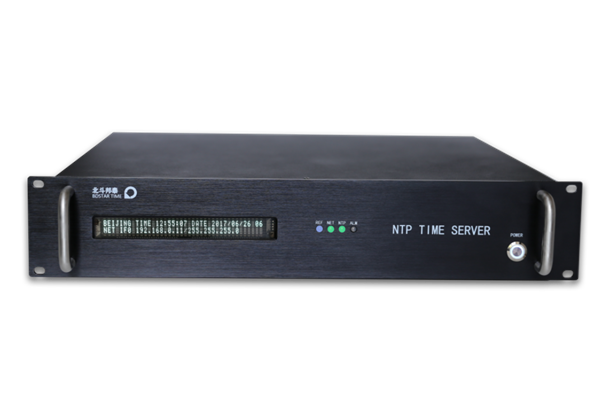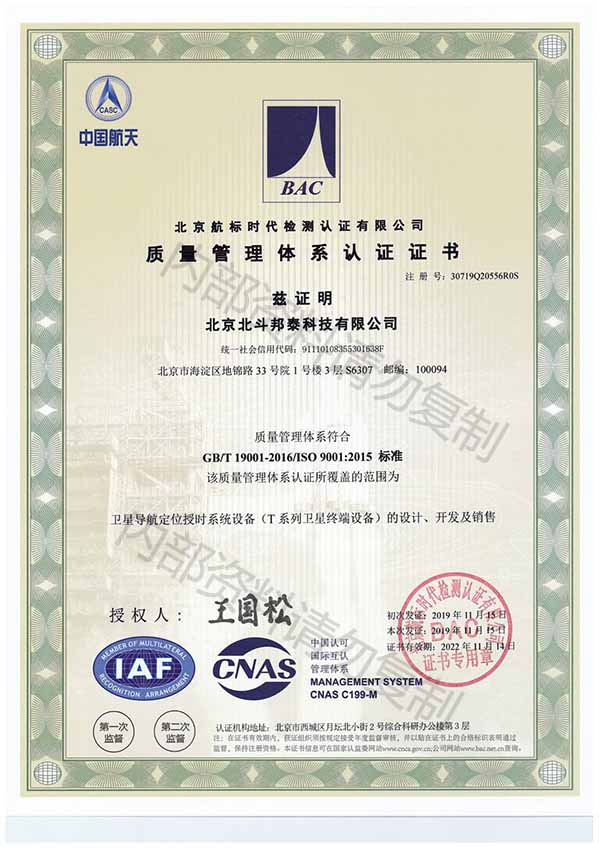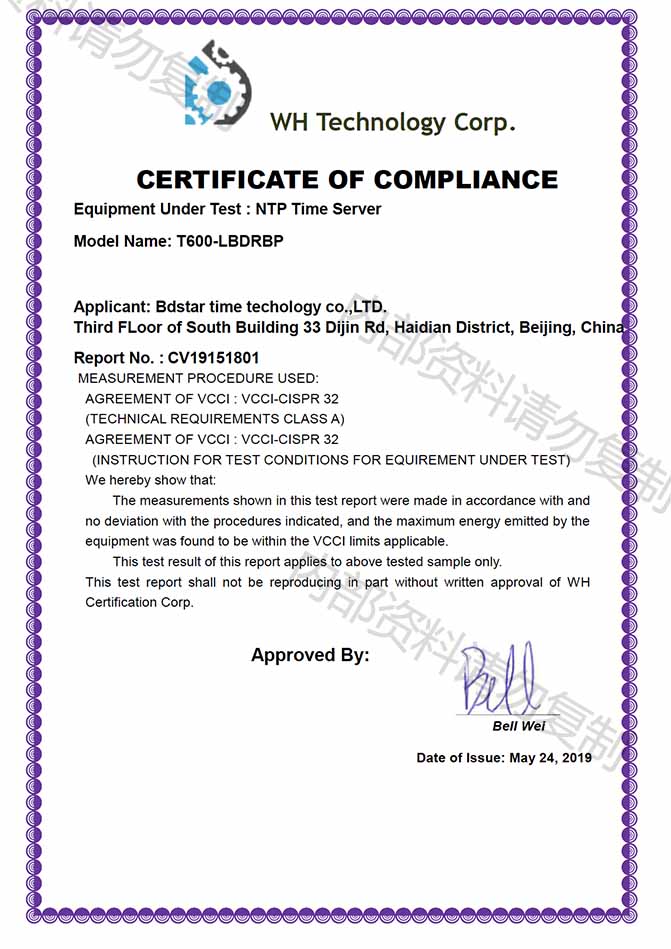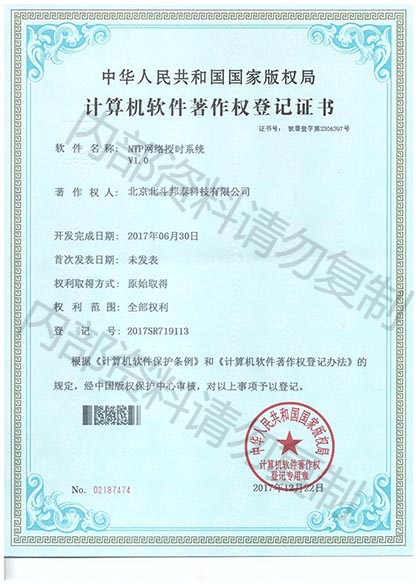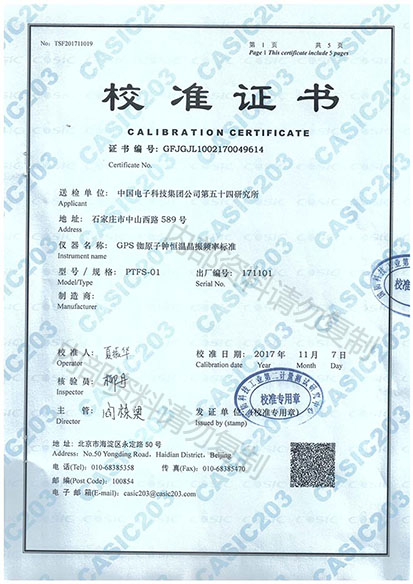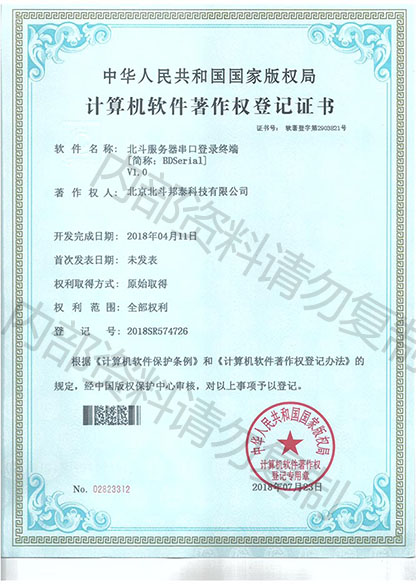home >> Rubidium atomic clock >> T700 Rubidium atomic frequency standardStandard time synchr

Product Description
The T700-M is designed with a sealed and interference-resistant structure, making it compact and easy to integrate. It incorporates an imported high-performance rubidium atomic oscillator and precise frequency calibration technology from Beijing Beidou Bangtai Technology, greatly reducing the inherent drift of the rubidium frequency standard. The device features low phase noise, high instantaneous stability, fast locking, and a wide range of output interfaces, making it suitable for various applications in communication, metrology, scientific research, and calibration laboratories.
The rubidium atomic clock consists of a rubidium quantum part and a voltage-controlled crystal oscillator. The frequency of the voltage-controlled crystal oscillator is multiplied and frequency synthesized before being compared with the transition frequency of rubidium atoms in the quantum system. The error signal is fed back to the voltage-controlled crystal oscillator to adjust its frequency, locking it onto the frequency corresponding to the specific atomic transition of rubidium. The short-term stability of the rubidium atomic frequency standard can reach the level of 10^-12, with an accuracy of ±5×10^-11. The locked crystal oscillator has a frequency of 10MHz, and three output channels are distributed and amplified. One channel directly outputs a 10MHz sine wave, another channel provides a 5MHz sine wave by frequency division and filtering of the 10MHz signal, and the last channel offers a 1MHz output.
Main Features:
- High-performance metrology-grade frequency standard
- Portable structural design
- Fast locking, low phase noise, and high stability
- Equipped with a one-input-four-output distribution amplifier
- Optional support for external synchronization input of a second pulse
T700-M Phase Noise Performance T700-M Short-Term Stability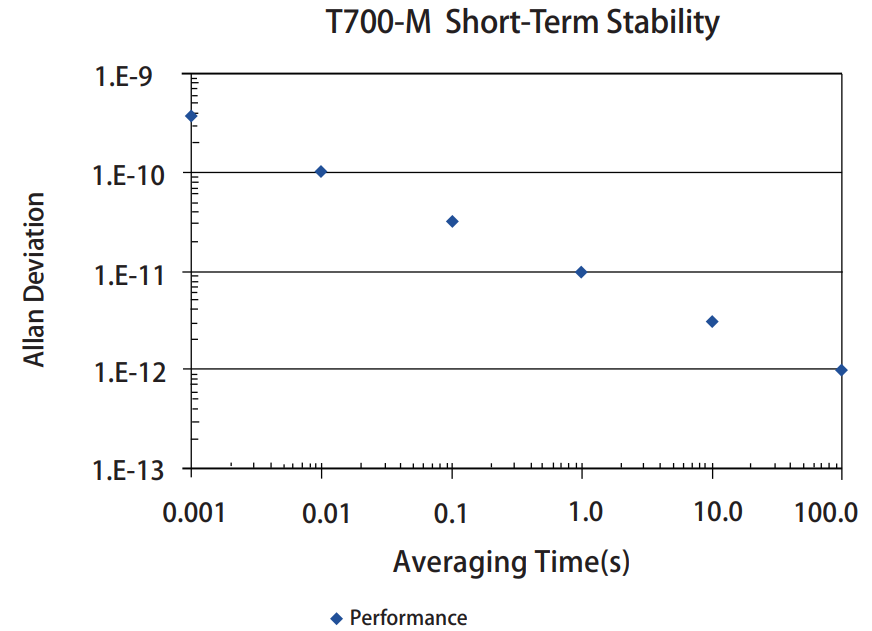 |
Technical Specifications:Output Signal:
- 10MHz, 1 channel, BNC interface
- Sine wave, 12dBm±1dB, 50Ω drive
- Drift: ≤1E-12/day, ≤3E-11/month
- Warm-up Characteristics: 5E-10 (within 5 minutes of startup)
Stability:
- <6E-10/1ms
- <1E-10/10ms
- <6E-11/100ms
- <1E-11/1s
- <5E-12/10s
- <1E-12/100s
Phase Noise:
- ≤ -80dBc/Hz @1Hz
- ≤ -100dBc/Hz @10Hz
- ≤ -130dBc/Hz @100Hz
- ≤ -150dBc/Hz @1kHz
- ≤ -160dBc/Hz @≥10kHz
Distortion:
- Harmonics: ≤ -50dBc
- Non-harmonics: ≤ -100dBc
Frequency Reproducibility:
- <5E-11 (after 24 hours power-off)
Built-in Frequency Adjustment Knob:
- Front panel manual frequency fine-tuning (multi-turn potentiometer)
- Frequency adjustment sensitivity: (2~3)E-12/grid
- Maximum frequency adjustment range: ±2E-9
Magnetic Field Sensitivity:
- <2E-11/Gauss (horizontal or X, Y-axis)
- <1E-10/Gauss (three-dimensional or Z-axis)
Indicators:
- Power status, lock status
Physical and Environmental Parameters:
- Dimensions: 200mm×130mm×44mm
- Weight: <1.5Kg
- Power Supply: DC 24V 5V
- Operating Temperature: -10°C to +50°C
- Storage Temperature: -30°C to +60°C
- Humidity: 95% non-condensing
- Power Consumption: ≤15W (≤25W during startup)
- Complies with GJB2242-94 "General Specification for Timekeeping Equipment" 3.9.1 regarding electromagnetic compatibility
Standard Configuration:
- Host 1 unit
- 1-meter power cord 1 piece
- User manual (in Chinese) 1 copy
- 1-meter signal cable 1 piece
|
Documentation
T700 Rubidium atomic frequency standard【PDF】data
PDF


